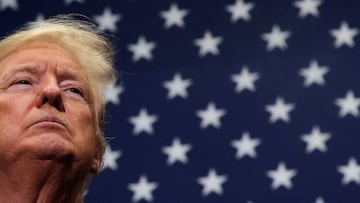Stimulus check: will there be a second round in May 2020?
The first round of stimulus check payments started being distributed by the Internal Revenue Services in April to help millions of Americans during the outbreak

More than 80 million Americans have received their stimulus check payment of $1,200 from the Internal Revenue Services (IRS) to aid them financially through the coronavirus pandemic. This came after the government approved a $2 trillion relief package to counter the economic setbacks of the crisis.
$2 trillion aid package in first round
The IRS started sending the $1,200 payments as early as mid-April and now, and now we find ourselves in May with not everyone who is eligible having received their check, and not everyone who has received a check knowing what it is for.
You might have heard the payment called a 'recovery rebate', instead of a stimulus check. That’s because it’s technically a tax credit that is set to appear on the return you'll file for the 2020-21 tax year.
While tax returns are usually granted after you file your taxes, the government has brought forward the credit to curb the impact Covid-19 has inflicted on American businesses and incomes. These stimulus checks may help those who have lost their job - with some questioning their rights to stay at home - or are struggling financially in the face of lockdown.
Will there be a second round in May?
It has become a common question if there will be a second round of stimulus checks in the month of May, as $1,200 might not cover the expenses for people who have lost their jobs or have faced additional financial obstacles in the past weeks.
Financial technology firm SimplyWise found that 63% of Americans will require a second stimulus check within the next three months to pay bills. “We could very well do a second round of direct payments,” President Donald Trump said while answering press questions earlier this month. “It is absolutely under serious consideration.”
Sixty-two members of Congress have signed a letter in favour of recurring monthly payments, seeing them as the most efficient mechanism for “delivering economic relief to those most at-risk in this crisis.” Many Republicans, however, are not keen on this idea, with one referring to it as ‘radical socialism’ and so discussions continue to find the solution.
**Follow the latest US coronavirus developments live**
See also:
- Unemployment Insurance: phone numbers & online portals by state
- CERB payments in Canada: how much, who's eligible, how to apply
- Who needs to use the non-filer application?
- How to track status with Get My Payment IRS portal
Policies taken in the US to deal with the economic crisis
$2.3 trillion aid
March 3 and March 15 - The Fed cuts package including: $500 billion interest rates in two emergency meetings on to help hard-hit industries; $350
March 3 (50 basis points) and March 15 (100 billion for small-business loans; bps), taking the federal funds rate to $250 billion for expanded 0-0.25%. It also cut the discount window unemployment aid; at least $100 rate by 150 basis points. billion for hospitals and related health systems.
March 18 - The Fed rolls out its third
March 23 - The U.S. House of emergency credit program in two days; this Representatives approves a $484 one aimed to ensure liquidity in money billion coronavirus relief bill, market mutual funds. funding small businesses and hospitals and pushing the total
March 23 - The Fed promises unlimited, spending response to the crisis open-ended QE, including purchases of to near $3 trillion. corporate and municipal bonds.
March 31 - The Fed broadens access to dollars with repo agreements for foreign central banks.
Related stories
April 9 - The Fed rolls out $2.3 trillion to backstop 'Main Street' local governments and small and mid-sized businesses.
April 27 - The Fed broadens its help for local governments, offering to buy bonds of up to three years' duration from counties with as few as 500,000 residents and cities with as few as 250,000 residents.